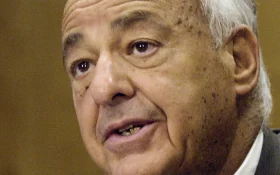Dr. Cyril Wecht, a renowned pathologist and attorney known for his controversial positions on high-profile deaths, including President John F. Kennedy’s assassination in 1963, passed away on Monday at the age of 93. The Administrative Office of Pennsylvania Courts announced his death but did not disclose the cause or location.
Wecht’s rise to fame began in 1964 when he was asked to review the Warren Commission’s report on Kennedy’s assassination. After examining the evidence, Wecht concluded that the single-bullet theory was “absolute nonsense” and that there was more than one shooter involved. His demonstration of the “magic bullet” theory became famous and was featured in Oliver Stone’s movie “JFK.”
Throughout his career, Wecht was sought after as a pathologist in numerous high-profile cases, including the deaths of Elvis Presley, JonBenet Ramsey, and Michael Jackson. He was known for his outspokenness and willingness to challenge official findings.
Wecht’s legal battles were also well-known. He emerged victorious from a five-year legal battle in 2009, during which prosecutors dropped all fraud and theft charges against him related to accusations that he used his position as Allegheny County medical examiner to further his private practice.
Despite his often cynical and caustic demeanor, Wecht remained generally upbeat throughout his life. In interviews, he expressed his fear of suffering or becoming dependent on others and emphasized the importance of recognizing loved ones before death.
Wecht’s contributions to forensic science were praised by attorney Alan Dershowitz, who called him the “Sherlock Holmes of forensic sciences.” Wecht documented many of his cases in six books, including “Cause of Death,” which he co-authored with his son Benjamin and journalist Mark Curriden.
Wecht is survived by his wife, Sigrid, their four children, and 11 grandchildren. His legacy as a prominent and controversial figure in forensic science and high-profile investigations will continue to be remembered and debated for years to come.
The Associated Press contributed to this article.
